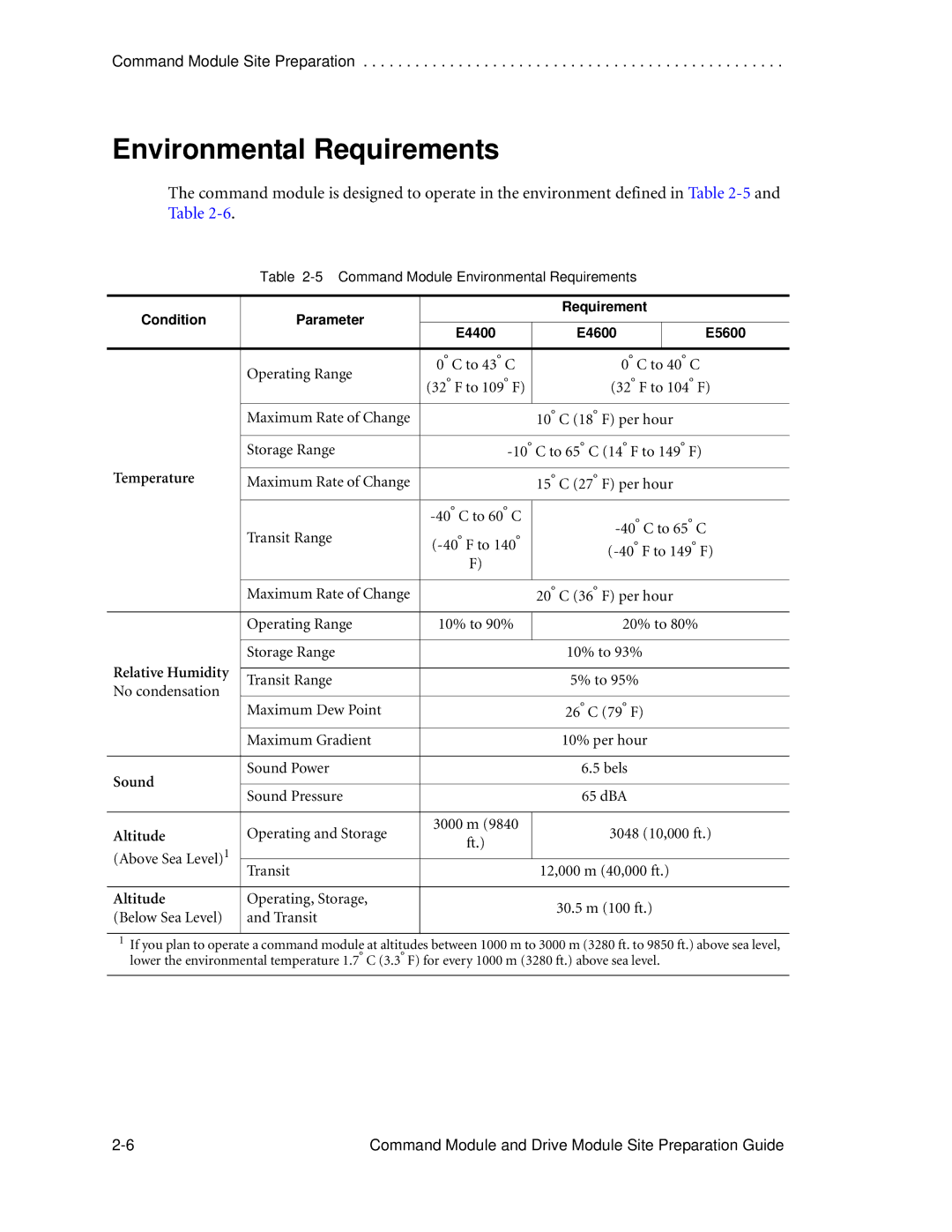Command Module Site Preparation . . . . . . . . . . . . . . . . . . . . . . . . . . . . . . . . . . . . . . . . . . . . . . . . .
Environmental Requirements
The command module is designed to operate in the environment defined in Table
Table
Condition | Parameter |
| Requirement |
| ||
|
|
|
| |||
|
| E4400 | E4600 |
| E5600 | |
|
|
|
|
|
| |
| Operating Range | 0° C to 43° C | 0° C to 40° C |
| ||
| (32° F to 109° F) | (32° F to 104° F) | ||||
|
| |||||
| Maximum Rate of Change |
| 10° C (18° F) per hour |
| ||
| Storage Range |
| ||||
Temperature |
|
|
|
| ||
Maximum Rate of Change |
| 15° C (27° F) per hour |
| |||
|
| |||||
| Transit Range | |||||
| ||||||
|
| F) |
|
|
| |
|
|
|
|
|
| |
| Maximum Rate of Change |
| 20° C (36° F) per hour |
| ||
| Operating Range | 10% to 90% | 20% to 80% |
| ||
|
|
|
|
|
| |
| Storage Range |
| 10% to 93% |
| ||
Relative Humidity |
|
|
|
|
| |
Transit Range |
| 5% to 95% |
| |||
No condensation |
|
| ||||
|
|
|
|
| ||
| Maximum Dew Point |
| 26° C (79° F) |
| ||
| Maximum Gradient |
| 10% per hour |
| ||
|
|
|
|
| ||
Sound | Sound Power |
| 6.5 bels |
| ||
|
|
|
|
| ||
Sound Pressure |
| 65 dBA |
| |||
|
|
| ||||
|
|
|
|
|
| |
Altitude | Operating and Storage | 3000 m (9840 | 3048 (10,000 ft.) | |||
ft.) | ||||||
(Above Sea Level)1 |
|
|
|
| ||
|
|
|
|
| ||
Transit |
| 12,000 m (40,000 ft.) |
| |||
|
|
| ||||
|
|
|
|
|
| |
Altitude | Operating, Storage, |
| 30.5 m (100 ft.) |
| ||
(Below Sea Level) | and Transit |
|
| |||
|
|
|
| |||
|
|
|
|
|
| |
1 If you plan to operate a command module at altitudes between 1000 m to 3000 m (3280 ft. to 9850 ft.) above sea level, lower the environmental temperature 1.7° C (3.3° F) for every 1000 m (3280 ft.) above sea level.
Command Module and Drive Module Site Preparation Guide |
